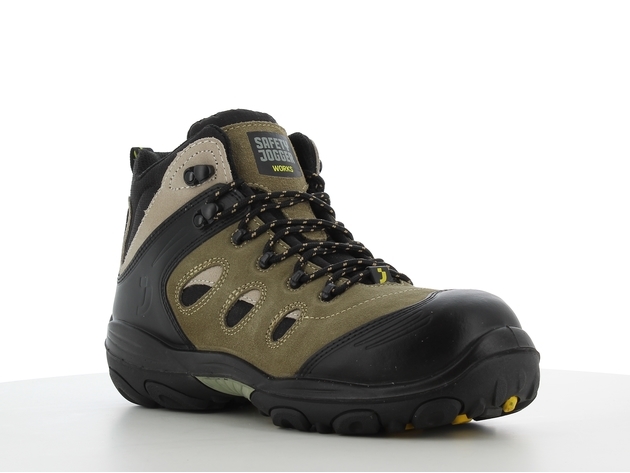lacvietintech
Thành viên cấp Sắt
- Tham gia
- 2 Năm 1 Month
- Bài viết
- 118
- Tuổi
- 33
Since COVID-19 began its rampant spread in 2020, we have learned that testing is vital to track and contain the spread of the disease. Many options are available for testing, including at-home tests and those conducted at doctors' offices and health care facilities. Some tests are based on mucus samples, while others use saliva or blood. Given the various options, how do you know which test is right for you? And do they all work the same way? Or tell you the same information?
We will start with the basics. As of April 2022, there are two categories of COVID-19 tests: diagnostic tests that look for active COVID-19 infection porn in your mucus or saliva, and blood tests that show past infection through the presence of antibodies—evidence that your immune system has encountered the infection before.
Coronavirus Home Tests: How They Work, What They Cost, and How Accurate They Are
Let's say your doctor orders a diagnostic test to confirm or rule out you are infected with SARS-CoV-2, the virus that causes COVID-19. Even among those tests, important differences exist. According to Daniel D. Rhoads, MD, section head of microbiology at the Cleveland Clinic, there are a couple of ways to detect the virus. Some tests look for a piece of the coating of the virus—they're called antigen tests—and other tests detect nucleic acid (such as RNA) belonging to the coronavirus. According to the Centers for Disease Control and Prevention (CDC), tests that identify RNA sequences are known as nucleic acid amplification tests, or NAATs.
Diagnostic viral tests can either be rapid tests or laboratory tests. Rapid tests produce results in minutes and can include antigen tests but also some NAATs.
Laboratory tests are RNA tests that use a variety of methods to detect the virus. One method involves a polymerase chain reaction (PCR) test, a lab technique used to detect the virus's genetic material, explains the U.S. Food and Drug Administration (FDA). Laboratory tests are highly sensitive but can take days to get a result.
"RNA tests also can remain positive for up to 3 months, even after somebody is no longer experiencing symptoms. Luckily, these patients are not likely infectious," Dr. Rhoads told Health.
Antigen tests are rapid tests that are generally quick and cheap but often less accurate than RNA tests. That means antigen testing is more prone to false negative results and more likely to miss cases of active infection.
"And neither antigen nor RNA testing predicts when someone is no longer contagious," said Dr. Rhoads. Since the virus can be detected after recovering from COVID-19, the CDC recommends relying on symptoms rather than test results to determine when someone can safely end any quarantine measures.
Are Swollen Glands a Sign of COVID-19? Here's What Doctors Say
Getting the Right COVID-19 Test
The right test depends on the goal, such as confirming an active COVID-19 infection; identifying asymptomatic or pre-symptomatic individuals to follow CDC isolation guidelines, or determining whether someone previously had COVID-19. "There is not a lone testing approach that is going to meet every need and solve every problem," said Dr. Rhoads.
Here's what you should know about the different COVID-19 tests, how they're used, and what they can tell you.
In most cases, a health care provider will collect mucus from your nose or throat using a specialized swab. (Some molecular tests now use saliva, which people may find more comfortable.) Turnaround time varies from minutes to days or longer, depending on whether the sample is analyzed onsite or sent to an outside lab, explains the Mayo Clinic.
Woman Suffers Extremely Rare Brain Fluid Leak After Coronavirus Test—Here's What You Need to Know
But at-home test kits have become available, allowing people to collect their own sample (mucus or spit) and get results within a few minutes. These test kits are easy to use and perhaps less intimidating than long-swab testing used in health care settings. Plus, one small study from 2020 suggests that when people are taught the proper technique for collecting their own sample, self-testing yields results that can be just as accurate as those performed by health care workers.
Antigen tests are rapid tests that consistently have a quicker turnaround time than RNA tests. Also, antigen tests are cheaper to produce, making them ideal for screening large numbers of people, like at airports, a 2020 article in the journal Nature points out.
From a patient's point of view, antigen testing works in much the same way as molecular testing. Your health care provider will swab the back of your nose or throat to collect a sample for testing. If you test positive, it's probably correct: Antigen tests are highly accurate. The problem is, these tests are more likely to miss active infection. If you have COVID-19 symptoms but test negative, your doctor may order a molecular test just to rule out a false negative.
Like some NAATs, antigen tests can be performed right at your health care provider's office, meaning you don't have to go to a lab for testing. Sindhu Aderson, MD, of Chicago-based Northwestern Immediate Care, said, "these point-of-care tests are mostly used in emergency departments, doctor's offices, and outpatient clinics."
We will start with the basics. As of April 2022, there are two categories of COVID-19 tests: diagnostic tests that look for active COVID-19 infection porn in your mucus or saliva, and blood tests that show past infection through the presence of antibodies—evidence that your immune system has encountered the infection before.
Coronavirus Home Tests: How They Work, What They Cost, and How Accurate They Are
Let's say your doctor orders a diagnostic test to confirm or rule out you are infected with SARS-CoV-2, the virus that causes COVID-19. Even among those tests, important differences exist. According to Daniel D. Rhoads, MD, section head of microbiology at the Cleveland Clinic, there are a couple of ways to detect the virus. Some tests look for a piece of the coating of the virus—they're called antigen tests—and other tests detect nucleic acid (such as RNA) belonging to the coronavirus. According to the Centers for Disease Control and Prevention (CDC), tests that identify RNA sequences are known as nucleic acid amplification tests, or NAATs.
Diagnostic viral tests can either be rapid tests or laboratory tests. Rapid tests produce results in minutes and can include antigen tests but also some NAATs.
Laboratory tests are RNA tests that use a variety of methods to detect the virus. One method involves a polymerase chain reaction (PCR) test, a lab technique used to detect the virus's genetic material, explains the U.S. Food and Drug Administration (FDA). Laboratory tests are highly sensitive but can take days to get a result.
"RNA tests also can remain positive for up to 3 months, even after somebody is no longer experiencing symptoms. Luckily, these patients are not likely infectious," Dr. Rhoads told Health.
Antigen tests are rapid tests that are generally quick and cheap but often less accurate than RNA tests. That means antigen testing is more prone to false negative results and more likely to miss cases of active infection.
"And neither antigen nor RNA testing predicts when someone is no longer contagious," said Dr. Rhoads. Since the virus can be detected after recovering from COVID-19, the CDC recommends relying on symptoms rather than test results to determine when someone can safely end any quarantine measures.
Are Swollen Glands a Sign of COVID-19? Here's What Doctors Say
Getting the Right COVID-19 Test
The right test depends on the goal, such as confirming an active COVID-19 infection; identifying asymptomatic or pre-symptomatic individuals to follow CDC isolation guidelines, or determining whether someone previously had COVID-19. "There is not a lone testing approach that is going to meet every need and solve every problem," said Dr. Rhoads.
Here's what you should know about the different COVID-19 tests, how they're used, and what they can tell you.
In most cases, a health care provider will collect mucus from your nose or throat using a specialized swab. (Some molecular tests now use saliva, which people may find more comfortable.) Turnaround time varies from minutes to days or longer, depending on whether the sample is analyzed onsite or sent to an outside lab, explains the Mayo Clinic.
Woman Suffers Extremely Rare Brain Fluid Leak After Coronavirus Test—Here's What You Need to Know
But at-home test kits have become available, allowing people to collect their own sample (mucus or spit) and get results within a few minutes. These test kits are easy to use and perhaps less intimidating than long-swab testing used in health care settings. Plus, one small study from 2020 suggests that when people are taught the proper technique for collecting their own sample, self-testing yields results that can be just as accurate as those performed by health care workers.
Antigen tests are rapid tests that consistently have a quicker turnaround time than RNA tests. Also, antigen tests are cheaper to produce, making them ideal for screening large numbers of people, like at airports, a 2020 article in the journal Nature points out.
From a patient's point of view, antigen testing works in much the same way as molecular testing. Your health care provider will swab the back of your nose or throat to collect a sample for testing. If you test positive, it's probably correct: Antigen tests are highly accurate. The problem is, these tests are more likely to miss active infection. If you have COVID-19 symptoms but test negative, your doctor may order a molecular test just to rule out a false negative.
Like some NAATs, antigen tests can be performed right at your health care provider's office, meaning you don't have to go to a lab for testing. Sindhu Aderson, MD, of Chicago-based Northwestern Immediate Care, said, "these point-of-care tests are mostly used in emergency departments, doctor's offices, and outpatient clinics."




